
St. Mary's Church is a Church of England church in Drimpton, West Dorset, England. The church opened in 1867 and now forms part of the Beaminster Area Team Ministry.

St Mark's Church is a Church of England church in Salisbury, Wiltshire, England. It was built in 1892–94 to the designs of Joseph A. Reeve and has been a Grade II listed building since 1974.
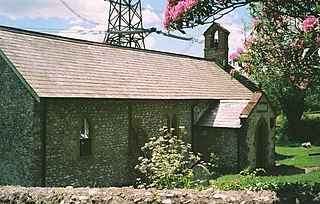
St John's Church is a Church of England church in Fishpond Bottom, Dorset, England. It was built in 1852 and has been a Grade II listed building since 1984. Today the church forms part of the Golden Cap Team of Churches, with a morning service held there three Sundays a month.

St. Luke's Church is a Church of England parish church in Burton, Dorset, England. It was designed by Benjamin Ferrey & Son and opened in 1875. The church has been a Grade II listed building since 1976. Historic England describe St Luke's as a "pleasing Victorian Gothic village church", with "a careful use of materials", "good Victorian fittings" and "a sense of honest simplicity".

St Aldhelm's Church is a private church in Lytchett Heath, Dorset, England. It was designed by George Crickmay for Lord Eustace Cecil and built in 1898. It has been a Grade II* listed building since 1984. The lychgate of the churchyard is also Grade II listed.

The Church of St Birinus is a Church of England church in Morgan's Vale, Wiltshire, England. It was designed by Charles Ponting and constructed in 1894–96. The church has been a Grade II listed building since 1985.

All Saints' Church is a former Church of England church in Manningford Bohune, Wiltshire, England. Designed by Whitley C. Clacy, the church was built in 1858–59 and declared redundant in 1973. It is now a private residence and has been a Grade II listed building since 1952.

The Church of St James the Less is a Church of England parish church in Hambridge, Somerset, England. It was designed by Benjamin Ferrey and built in 1842–44. The church has been a Grade II listed building since 1988. Adjacent the church is a former national school, which was built in 1844 and is also Grade II listed.

The Church of the Blessed Virgin Mary is a Church of England church in West Chinnock, Somerset, England. It has 13th-century origins but was largely rebuilt in 1889–90 to the design of Charles Kirk. It is a Grade II listed building and now forms part of the Ham Hill Churches Benefice.

The Church of St John the Evangelist is a Church of England parish church in Tatworth, Somerset, England. It was built in 1850–51 to the design of Charles Pinch of Bath and is a Grade II listed building.
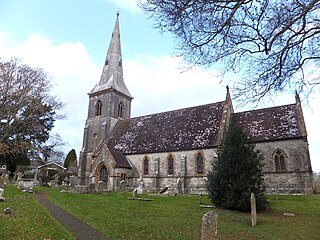
St Mary's Church is a Church of England parish church in Bradford Peverell, Dorset, England. It was designed by Decimus Burton and built in 1849–50. The church is a Grade II* listed building.

Holy Rood Church is a former Church of England church in Coombe Keynes, Dorset, England. Most of the church dates to a rebuild of 1860–61, but the tower and chancel arch is 13th-century. It was declared redundant in 1974 and is now under the care of a charitable trust. The former church is a Grade II listed building.

St Luke's Church is a Church of England church in West Orchard, Dorset, England. Most of the church dates to a rebuild of 1876–77 to the designs of Thomas Henry Wyatt, but the chancel is 15th-century. The church is a Grade II listed building.

All Saints' Church is a Church of England church in Chalbury, Dorset, England. It has 13th-century origins, with later alterations and additions, and many 18th-century furnishings. The church is a Grade I listed building. In the churchyard, an early 19th-century table tomb of the Long family is Grade II listed.

All Saints' Church is a Church of England parish church in Tarrant Keyneston, Dorset, England. Most of the church dates to a rebuild of 1852–53, but the tower is 15th-century. The church is a Grade II* listed building.
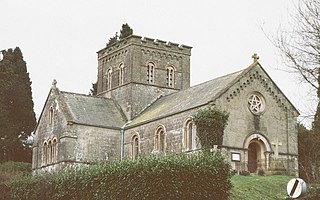
St John's Church is a Church of England parish church in Enmore Green, Dorset, England. The church was designed by George Alexander and built in 1842–43. It is a Grade II listed building.

St Mary's Church is a former Church of England parish church in Tyneham, Dorset, England. The church, which is a Grade II listed building, has 13th-century origins, with later additions, alterations and restorations. It is now under the care of the Ministry of Defence and is used as a museum and monument.
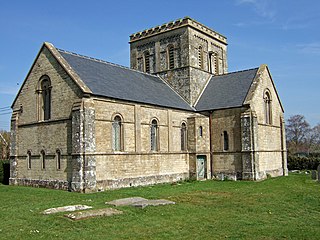
Christ Church is a Church of England parish church in East Stour, Dorset, England. The church, a Grade II listed building, was designed by George Alexander and built in 1841–42. Today the church forms part of the Stour Vale Benefice.

Holy Trinity Church is a Church of England church in Salway Ash, Dorset, England. The church was designed by George Crickmay and built in 1887–89. It now forms part of the Beaminster Area Team Ministry.
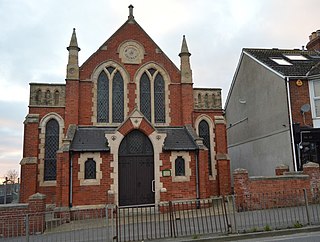
Wyke Regis Methodist Church is a former Methodist church in Wyke Regis, Dorset, England. Designed by Ford & Slater of Burslem, it was built in 1903 and remained in use until 2021.



















